STEM: Thinking. Stretching. Innovating. Wondering.
From the depths of the oceans to black holes in space, and from the largest animal on earth, the blue whale, to one of the smallest organisms, a virus, publishers have left no stone unturned in the pursuit of bringing kids into the STEM fold.

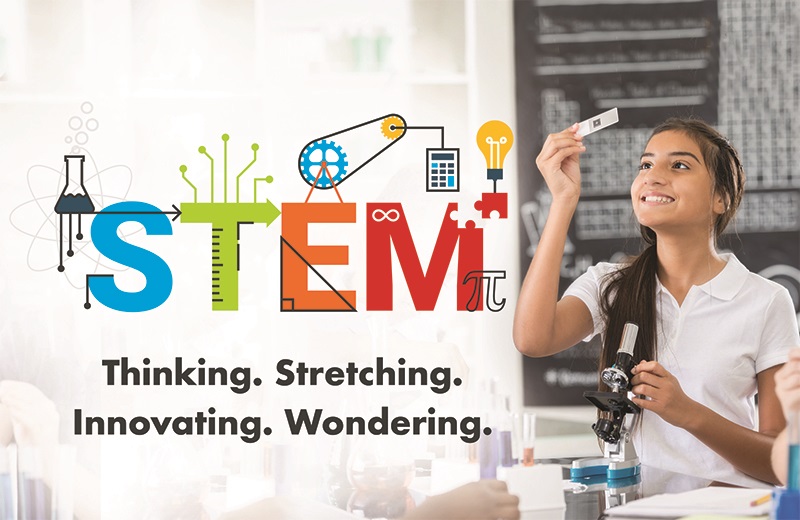
“It’s about trying, stretching, innovating, thinking, wondering. Everything to keep kids’ curiosity going,” says Andi Diehn, content marketing manager for Nomad Press.
The publishers featured here share a passion for inspiring kids to engage with STEM through both fiction and nonfiction. These titles don’t just impart information. They demonstrate STEM in action with hands-on activities like developing a sewing robot, building a sun scope, or examining a SARS-CoV-2 micrograph. For children, these books can spark an early interest in STEM subjects that can translate into academic success or even a career direction.
Featured titles encourage young readers to see the world through the eyes of a scientist or a mathematician. Kids will discover how STEM touches their daily lives, from the kitchen pantry to the recycling bin. Several new titles investigate climate change and environmental policy through the lens of science and engineering, while new books about Nobel Prize winner Marie Curie and Cherokee aerospace engineer Mary Golda Ross celebrate the great scientific accomplishments of women and people of color. Complete with ingenious hands-on activities and enriching back matter, these new titles are perfect for lockdown days or homeschoolers.
Nomad Press
For 20 years, Nomad Press has published activity-based nonfiction books that inspire, challenge, and engage young readers. Approximately two-thirds of Nomad’s titles are hands-on science books that expose kids to the fundamental concepts and terminology of biology, chemistry, physics, and engineering.
“Science is everywhere in the world,” says Content Marketing Manager Andi Diehn. “Scientists don’t always wear lab coats, and learning is not just for classrooms.”
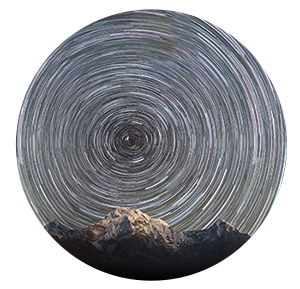 “This is the most hopeful book I read last year,” Diehn says about The Universe: The Big Bang, Black Holes, and Blue Whales, by Matthew Brenden Wood, illustrated by Alexis Cornell, April 2021, ISBN 9781619309326. This 128-page epic for ages 12–15 covers the history of the universe and describes ways to protect Earth’s environment. This year, Nomad will also release science biographies of Marie Curie, Ben Franklin, and Leonardo da Vinci, complete with innovative home projects.
“This is the most hopeful book I read last year,” Diehn says about The Universe: The Big Bang, Black Holes, and Blue Whales, by Matthew Brenden Wood, illustrated by Alexis Cornell, April 2021, ISBN 9781619309326. This 128-page epic for ages 12–15 covers the history of the universe and describes ways to protect Earth’s environment. This year, Nomad will also release science biographies of Marie Curie, Ben Franklin, and Leonardo da Vinci, complete with innovative home projects.
The Chemistry of Food, by Carla Mooney, illustrated by Traci Van Wagoner, August 2021, ISBN 9781647410261, brings science into kids’ everyday lives. This young adult book demonstrates key scientific concepts, such as chemical and physical reactions, through the cooking process. Kids also learn about the molecular components of food and how the human body uses key nutrients.
The Science of Fashion, by Julie Danneberg, illustrated by Michelle Simpson, August 2021, ISBN 9781647410308, explains for readers ages 12–15 how much technology, science, and engineering goes into what we wear, like the computers used in fashion design, the science behind dyes, and the engineering innovations in manufacturing. The book also examines how fashion industry practices impact the environment. In one activity, kids follow a sweater’s journey from raw materials to bedroom drawer.
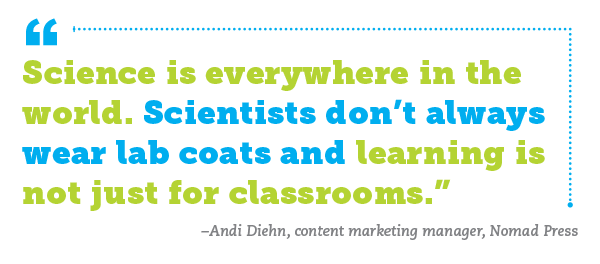
Move Books
“What is a kid’s bridge to the world?” asks Eileen Robinson, founder and publisher of Move Books. “That bridge is reading. No matter how we do it. Reading is essential.” Robinson’s passion for inspiring young male readers drives her work at Move. “Utilizing STEM makes those worlds even more interesting in general, but especially for boy readers.”
One of Move Books’ latest offerings is Follow the River, by Paul Greci, illustrated by James Madsen, May 2021, ISBN 9781732213715. In this sequel to Surviving Bear Island, Tom Parker must travel in a rickety canoe through the Alaska wilderness to find help for the only family he knows. Greci worked in Alaska for over 25 years as a field biology technician in remote wilderness areas and as a naturalist for outdoor education programs. He describes the detailed ecosystem of the Alaska terrain, including wildlife and geography, and draws on his expert knowledge to show the practical science of survival to readers ages 9–12.
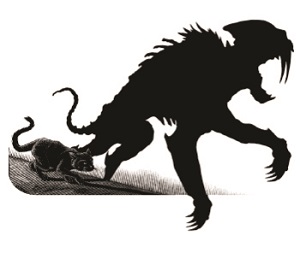 The Lost Tribes: Trials, by Christine Taylor-Butler, illustrated by Patrick Arrasmith, July 2021, ISBN 9781732213753, is the third installment in Move Books’ successful science fiction adventure series for kids ages 10–12. An MIT-trained civil engineer and architect, Taylor-Butler has written over 80 nonfiction science books in addition to this series. She weaves solid scientific facts, history, and advanced technology throughout the plot of Trials, the story of five teenage friends on a mission to save the earth.
The Lost Tribes: Trials, by Christine Taylor-Butler, illustrated by Patrick Arrasmith, July 2021, ISBN 9781732213753, is the third installment in Move Books’ successful science fiction adventure series for kids ages 10–12. An MIT-trained civil engineer and architect, Taylor-Butler has written over 80 nonfiction science books in addition to this series. She weaves solid scientific facts, history, and advanced technology throughout the plot of Trials, the story of five teenage friends on a mission to save the earth.
“When Christine speaks to kids, she’s magical,” says Robinson. “She’s very excited about getting more girls and more kids of color into science. She knows how to connect with kids at their level by showing them how science is part of their daily lives.”
The first two books in “The Lost Tribes” series sold out in 2020 and had to be reprinted. Plus, MIT included “The Lost Tribes” in its summer STEAM program for high schoolers last year. Building on this success, Move Books is excitedly planning two new, as yet undisclosed STEM titles for fall 2021.
Lerner Publishing Group
Minneapolis-based Lerner Publishing Group was founded 62 years ago to create medical-themed books for kids. Today, almost a quarter of Lerner’s nonfiction titles focus on STEM. Speaking about its K–5 “sweet spot,” Rachel Zugschwert, vice president of marketing, describes Lerner’s aim as “to publish the breadth of what kids like, from learning-to-read to reading-to-learn.”
Hothouse Earth: The Climate Crisis and the Importance of Carbon Neutrality, by Stephanie Sammartino McPherson, March 2021, ISBN 9781541579170, presents climate change for readers ages 11–18 from the perspective of science, politics, and social justice. The book examines the frequency of extreme weather events like hurricanes, droughts, floods, and wildfires. Teens learn about melting permafrost, forest dieback, ocean acidification, and other climate change processes that endanger the environment. McPherson also explains the public policy process and how to minimize our carbon footprint.
 Classified: The Secret Career of Mary Golda Ross, Cherokee Aerospace Engineer, by Traci Sorell, illustrated by Natasha Donovan, March 2021, ISBN 9781541579149, is the first book for children ages 7-11 about this celebrated Cherokee aerospace engineer. A hidden figure of the space age, Mary Golda Ross brought her passion for math to the Lockheed Aircraft Corporation during World War II. She later joined a top-secret division as the sole female engineer working on space travel, ballistic missiles, and more.
Classified: The Secret Career of Mary Golda Ross, Cherokee Aerospace Engineer, by Traci Sorell, illustrated by Natasha Donovan, March 2021, ISBN 9781541579149, is the first book for children ages 7-11 about this celebrated Cherokee aerospace engineer. A hidden figure of the space age, Mary Golda Ross brought her passion for math to the Lockheed Aircraft Corporation during World War II. She later joined a top-secret division as the sole female engineer working on space travel, ballistic missiles, and more.
Beyond: Discoveries from the Outer Reaches of Space, by Miranda Paul, illustrated by Sija Hong, April 2021, ISBN 9781541577565, shows what readers ages 5–9 might see if they were on the New Horizons spacecraft. Readers will encounter phenomena including a black hole, the birth of a star, dark matter, and a planet where gemstones fall from the sky. Infused with a sense of wonder, Paul’s poetic text was informed by expert research and a weeklong astronomy workshop in Wyoming.
Germs Up Close, by Sara Levine, April 2021, ISBN 9781728424088, is a comprehensive teaching tool for grades pre-K–4 to explain what the word germ really means. With some gross-out fun, this book features dramatic micrographs and illustrations that show close-up views of bacteria, protozoa, fungi, and viruses like SARS-CoV-2, the virus responsible for COVID-19. The book concludes with tips for staying healthy, as well as information about the immune system and vaccines.
National Geographic Kids
Founded in 1888, National Geographic is one of the largest scientific and educational organizations in the world. National Geographic Kids, the children’s publishing arm of the company, has access to the entire Nat Geo team of scientists, explorers, photographers, and top experts. Its books are perennial favorites that take pride of place on kids’ bookshelves for years.
“We want to immerse kids in authentic experiences to ignite their curiosity about the world,” says Rebecca Baines, vice president and editorial director. “Our secret weapons are facts, photos, fun, and all things animal.”
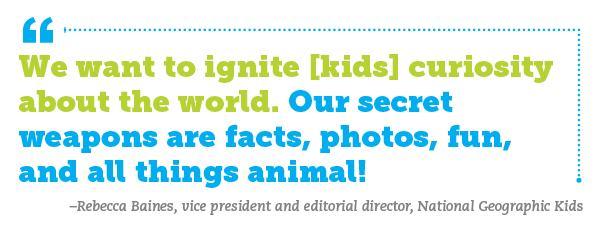
Ninety percent of Nat Geo Kids’ titles are nonfiction books. The remaining 10 percent are fact-based fiction titles published by the Under the Stars imprint. “Fact-based fiction brings kids action-packed stories that layer in mind-blowing nonfiction elements inspired by our greatest National Geographic explorers,” says Baines.
The "Explorer Academy" series exemplifies fact-based action-adventure storytelling that captivates young readers. For ages 8–12, Explorer Academy: The Tiger’s Nest, by Trudy Trueit, illustrated by Scott Plumbe, September 2020, ISBN 9781426338625, is the fifth installment in this series about Cruz Coronado’s quest to uncover the truth about his mother’s untimely death. Cruz attends an elite explorers’ school that engages in scientific research around the world. The Tiger’s Nest finds Cruz and his fellow students on an island in the Indian Ocean, where the explorers investigate the underwater world and participate in a friendly robotics competition…until a familiar foe appears.
To find out more about the STEM behind this series, readers can also check out Explorer Academy Future Tech, by Jamie Kiffel, January 2021, ISBN 9781426339141. For ages 8–12, this book profiles the real-life National Geographic explorers who inspired Cruz Coronado’s adventures. It features engineering innovations like wearable technology, submersibles, robotics, and space farming tech.
Kids will learn tangible ways to make a difference in Kids vs. Plastic: Ditch the straw and find the pollution solution to bottles, bags, and other single-use plastics, by Julie Beer, December 2020, ISBN 9781426339103. Beer takes a hard look at both the problem and the solutions for plastics in our oceans. To demonstrate the scale of the challenge, Beer shows kids ages 8–12 the Great Pacific Garbage Patch, an accumulation of floating ocean plastic twice the size of Texas. Beer describes engineering innovations to tackle the issue, such as upcycling plastics, and teaches kids how to reduce their own plastic footprints.
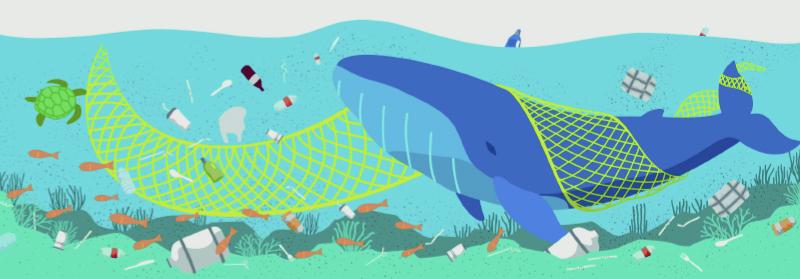
It’s a Numbers Game! Baseball, James Buckley Jr., February 2021, ISBN 9781426371578, is the third book for readers 8–12 in the partnership between National Geographic Kids and ESPN that uses sports to teach STEM. A former editor at Sports Illustrated and NFL Publishing, Buckley examines baseball through the lens of mathematics. Buckley describes all the ways math factors into the game, from the exact timing used to steal a base to the statistics that measure each player’s season. Colorful graphics and charts help kids visualize the numbers. “STEM and sports are a winning combination,” says Baines.
Conclusion
This season’s titles feature wide-ranging topics and creative approaches to engage kids in STEM. From the depths of the oceans to black holes in space, and from the largest animal on earth, the blue whale, to one of the smallest organisms, a virus, publishers have left no stone unturned in the pursuit of bringing kids into the STEM fold. As National Geographic Kids’ Rebecca Baines says, “We want to be everywhere that kids are and meet them at every age and stage.”
SPONSORED CONTENT
RELATED
The job outlook in 2030: Librarians will be in demand
The job outlook in 2030: Librarians will be in demand
ALREADY A SUBSCRIBER? LOG IN
We are currently offering this content for free. Sign up now to activate your personal profile, where you can save articles for future viewing





Add Comment :-
Be the first reader to comment.
Comment Policy:
Comment should not be empty !!!